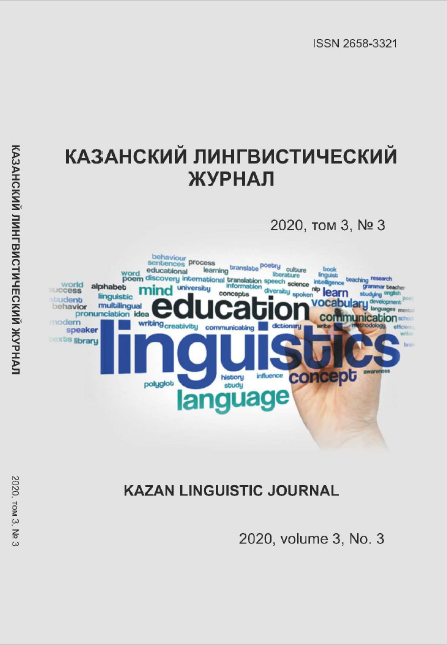Semantic features of phraseological expressions in the language of the fashion industry
Keywords:
English, phraseology, phraseological units, phraseological expression, national specificity of thinking, the language of the fashion industry, differential featuresAbstract
This article is devoted to the semantic features of phraseological units in the fashion industry. The language of the fashion industry, in particular fashion magazines, is poorly studied and attracts a lot of linguists' attention to the study of the lexical and semantic composition of this phenomenon, which makes it possible to better understand the values promoted by this subculture, which can be considered part of human history and culture. In this regard, the study of phraseological expressions in the texts of modern English-language fashion magazines seems relevant and promising from the perspective of considering the national specifics of the thinking of the people and its reflection in English phraseology. An attempt was also made to classify phraseological units according to the differential characteristics, such as «appearance», «career / social activity», «romantic relationship».
References
Литература
Авербух К.Я., Карпова О.М. Лексические и фразеологические аспекты перевода: учебное пособие. М.: Издательский центр «Академия», 2009. 172 с.
Комарова Е.В. Особенности использования и функции фразеологизмов на разных уровнях художественного текста. Мир науки, культуры и образования. Горно-Алтайск, 2019. № 5. С. 380–388.
Мюллер В.К. Большой англо-русский русско-английский словарь. М., 2018. 636 с.
Розенталь Д.Э. Теленкова М.А. Справочник по русскому языку. Словарь лингвистических терминов. Минск: Оникс, Мир и Образование, Харвест, 2008. 624 с.
Савицкий В.М. Английская фразеология: проблемы моделирования. Самара, 1993. 172 с.
Стенина Е.А. Роль фразеологизмов с компонентом цветообозначения в индустрии моды и красоты (на материале английского, итальянского и русского языков). Инновационное развитие науки и образования: сборник статей VI Международной научно-практической конференции. В 2 ч. Ч. 1. Пенза, 2019. С. 169–173.
Чернышева И.И. Фразеология современного немецкого языка. М.: Высшая школа, 1970. 199 с.
Шитова Л.Ф, Брускина Т.Л. Англо-русский словарь идиом и фразовых глаголов. М.: «Антология», 2019. 256 с.
Шмелев Д.Н. Современный русский язык. М., 1977. 355 с.
Шпаковский В.Ф., Шпаковская И.В. Большой универсальный англо-русский словарь. М., 2009. 815 с.
References
Averbukh K.Ya., Karpova O.M. (2009). Lexical and phraseological aspects of translation: textbook. M.: Izdatel’skii centr “Akademiya”. 172 p. (In Russian)
Komarova E.V. (2019). Features of the use and function of phraseological units at different levels of literary text. Mir nauki, kultury i obrazovaniya. Gorno-Altaysk. № 5. Pp. 380–388. (In Russian)
Muller V.K. (2018). Big English-Russian Russian-English Dictionary. Moscow. 636 p. (In Russian)
Rosenthal D.E. Telenkova M.A. (2008). Handbook of the Russian language. Glossary of linguistic terms. Minsk: Oniks, Mir i Obrazovanie, Harvest. 624 p. (In Russian)
Savitsky V.M. (1993). English phraseology: modeling problems. Samara.172 p. (In Russian)
Stenina E.A. (2019). The role of phraseological units from color designation components in the fashion and beauty industry (based on the material of English, Italian and Russian languages). Innovative development of science and education: collection of articles of the VI scientific-practical conference. Part 1. Penza. Pp. 169–173. (In Russian)
Chernysheva I.I. (1970). Phraseology of the modern German language. M.: Vysshaya shkola. 199 p. (In Russian)
Shitova L.F, Bruskina T.L. (2019). The English-Russian Dictionary of Idioms and Phrasal Verbs. Moscow: “Anthologiya”. 256 p. (In Russian)
Shpakovsky V.F., Shpakovskaya I.V. (2009). Big universal English-Russian dictionary. Moscow. 815 p. (In Russian)
Shmelev D.N. (1977). Modern Russian language. Moscow. 355 p. (In Russian)






